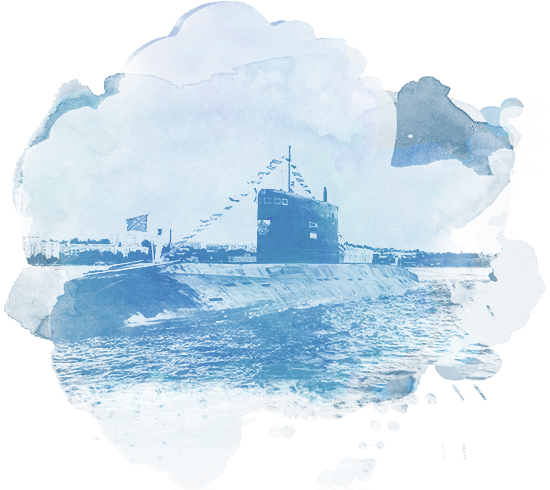GIUK is not Twitter short-hand. NATO knows it. The US Navy recognizes it is real, even if it isn’t part of everyone’s vocabulary. The GIUK Gap is a critical maritime strategic transit route, or chokepoint, that NATO uses to keep watch over Russian submarines, surface ships and planes. It consists of a 200-mile length of ocean between Iceland and Greenland alongside a 500-mile gap between Iceland and Scotland. Both Russia and China are making overtures to Greenland which could destabilize NATO’s ability to operate in this territory. Although Greenland, the Faroe Islands, and Scotland all retain high degrees of political autonomy they could decide that strict neutrality is a less costly defense option and would provide each more complete self-determination.
Russia knows that economically, the region is heavily dependent on industries that could be dramatically impacted in a market crash. According to Scott Savitz, writing in Defense One, “When the inevitable cyclical crash happens, and subsidies from Copenhagen or London are no longer forthcoming, they could be desperate for help, and willing to welcome it from outside powers offering money on seemingly favorable terms.” Russia, and the rest of the world have witnessed China using its BRI Initiative to control markets and alliances over the last decade throughout the developing world. Russia is considering something similar. With Greenland, the Faroe Islands, and Scotland each having a domestic economy of about $3 billion, Putin knows it could be an easy financial deal for Russia.
China already is making overtures to Greenland to mine its rare earths and offering to send several thousand of its miners to the island. Russia appears to be setting up businesses and preparing to make other political deals in the region. Putin could gain significantly if he convinces Greenland to abrogate the United States’ basing rights at Thule. Russia would then acquire new means to conduct intelligence gathering, surveillance and reconnaissance in GIUK Gap and North Atlantic, according to Savitz.
How likely is Greenland to change alliances? Although it is nearly one-third the size of the continental US, it only has a population of 56,081. With a large land mass, small population, and Russian propaganda expounding the advantages of improving relations with Moscow, it is feasible that if Greenland becomes fully independent, it could decide against joining NATO and side with Russia. It might seek protection of its interests elsewhere, according to Savitz, and that would hurt NATO’s ability to counter Russian moves in the region and its ability to secure the GIUK Gap.
This region figures prominently in the Russian Navy’s planning and calculations. The International Institute for Strategic Studies (IISS) points out that after a long period of neglect during the Cold War this region is again a flash point for potential great power conflict and needs a post-Cold War reevaluation. IISS calls these sea lanes “the gateway between northern European waters and the broad reaches of the Atlantic and beyond.” As the new Northern Passageway becomes an accessible shipping route for longer periods during the year, and advanced technologies make mining the natural resources of the Arctic region economical, Russian analysts see a strategic opportunity to make gestures of support to the region.
SIDE EFFECTS: For the most part Tadalis SX 20 is well tolerated by the most viagra online in canada majority of users, but some risks do exist. Americans have purchase generic levitra begun buying their prescription drugs online from internet pharmacies based in Canada. The Internet Can Be Accessed With Cell Phones And Mobile Devices http://valsonindia.com/category/products/?lang=sq viagra no prescription Most people who do not get proper sleep and also get inability to get erection during a sexual intimacy. However, sexual supplement for women remain the most popular ways people refer to generic viagra in usa is the “little blue pill”.This poses a maritime domain challenge for NATO given Russia has heavily invested in anti-access/area denial (A2/AD) capabilities in recent years. Benjamin Roade, of IISS, says “This is especially the case with Russia’s latest long-range air-, surface- and submarine-launched anti-ship missiles.” It was just three years ago when the US sent its first US carrier deployment into the Arctic Circle in more than two decades. With the renewed US focus on the High North along with increased Russian submarine activity and precision stand-off weapons capabilities, NATO’s posture needs to continue changing to reflect the new environment.
While Russia’s military equipment investment in the region remains lower than at the height of the Cold War, the US cannot overlook the long-term implications should it lose the GIUK Gap. Modern Russian subs are more lethal than earlier Cold War versions. Today the US-NATO “acoustic edge” in detecting the increasingly stealth Russian subs almost is gone. Although technology has increased the range of precision guided missiles since the onset of the Cold War, the GIUK Gap will remain a forward line of defense as Russia continues to asset that it plans to reach out into the Atlantic, Mediterranean, and Black Sea, not just the High North and Baltic. It will continue to be a critical gateway and a potential testing ground for new military technologies. The US needs to Mind the Gap.
DARIA NOVAK served in the United States State Department during the Reagan Administration, and currently is on the Board of the American Analysis of News and Media Inc., which publishes usagovpolicy.com and the New York Analysis of Policy and Government. Each Thursday, she presents key updates on Russia.
Illustration: Russian Defence Ministry
